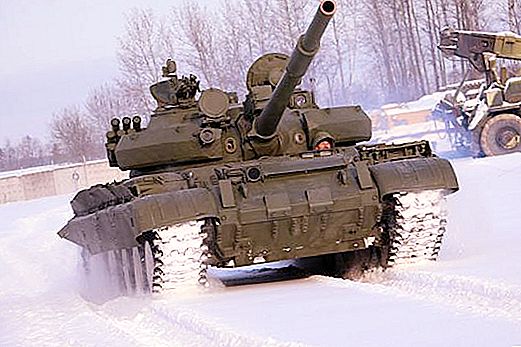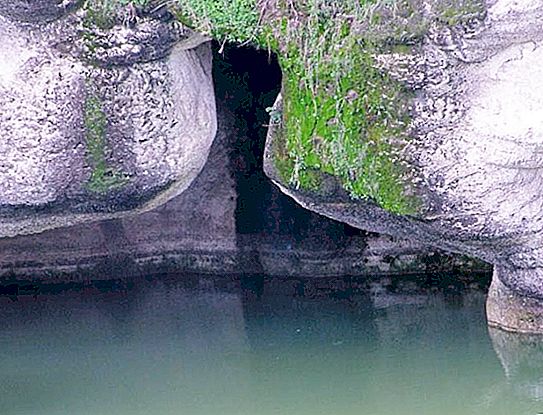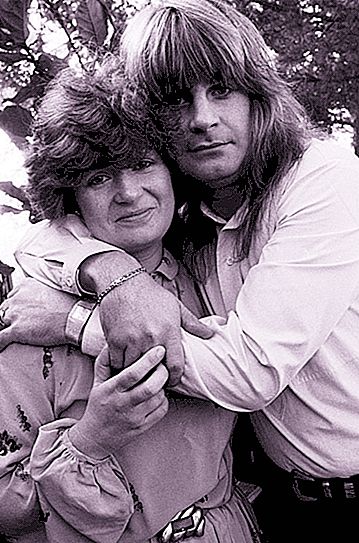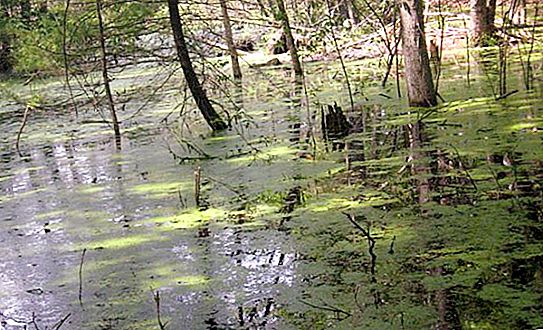The fleet of the Armed Forces of Russia is represented by a large assortment of different models of armored personnel carriers and military vehicles. During the years of the Soviet Union, one of the first production tanks of the caliber of 115 mm was the T-62. According to experts, the appearance of this model made a huge contribution to the development of domestic tank building. For ten years, the USSR industry produced at least 20 thousand units of this equipment. Information on the device, combat use and tactical and technical characteristics of the T-62 tank is contained in the article.

Acquaintance with a military unit
T-62 is a Soviet medium tank. It is designed on the basis of the T-55. Serial production of the model lasted until the 70s. In 2013, the T-62 in Russia was officially withdrawn from service. Nevertheless, it is still used in several armies of the world.
Start of creation
In the 1950s in the USSR, the T-55 was used as the main medium tank, equipped with a D-10T rifled gun of 100 mm caliber. According to experts, firing from this gun with caliber armor-piercing shells was not able to effectively hit the American M48 medium tank that appeared at that time. The armies of Western countries have already produced a line of new cumulative and sub-caliber shells. At the optimum combat distance, such an ammunition could destroy an old-style Soviet tank. The appearance in the potential enemy of new and higher-quality shells stimulated Soviet weapons designers to create a domestic tank, not inferior to Western models.
About directions in design
The engineers of the Design Bureau of the Uralvagonzavod carried out design work to create a new promising tank, which was listed as Object No. 140 in the technical documentation. In 1958, the chief designer of the plant, L. N. Kartsev, took the initiative to stop further design, since there was a possibility that the combat unit would be too low-tech and difficult to use.
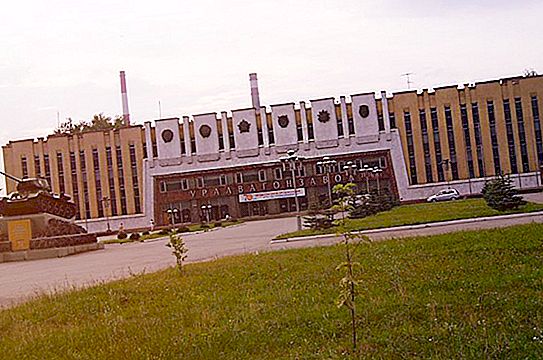
At the same time, work was underway on Object No. 165. For this model, from Object No. 140, the designers took the hull and turret, and from the T-55 a motor-transmission compartment and a running gear. After successful factory tests in 1959, the USSR Ministry of Defense decided to continue development in this direction. The Soviet weapons engineers were tasked with creating a promising tank structurally close to the T-55.
About further developments
Initially, Object No. 165 was planned to be equipped with a new 100-mm rifled gun D-54, created back in 1953. This gun was used as the main one in other medium Soviet tanks. Unlike the D-10, the projectile fired from the new gun had an increased initial velocity of 1015 m / s. Improvements also affected armor penetration, which was increased by 25%. However, according to Soviet experts, this was not enough to effectively counter Western tanks. In addition, the gun’s muzzle brake caused many complaints. During the operation of the gun, a cloud of snow, sand or dust was unmasked. It also prevented the observer from seeing the result of the shooting. In addition, the muzzle wave could harm the health of the infantry and the landing troops close to the tank. Work on a new promising tank was started in 1957 at the design bureau of plant No. 183. In 1959, the first prototype was ready. His testing lasted until 1961. In August, the T-62 tank model was completely ready.
About design
For the T-62 tank (a photo of the combat unit is presented in the article), the classic layout is characteristic. Namely: the engine-transmission compartment is located in the aft, the managerial - in the frontal, and the fighting compartment - in the middle. The crew of the T-62 provides four people: a driver, commander, gunner and loader.
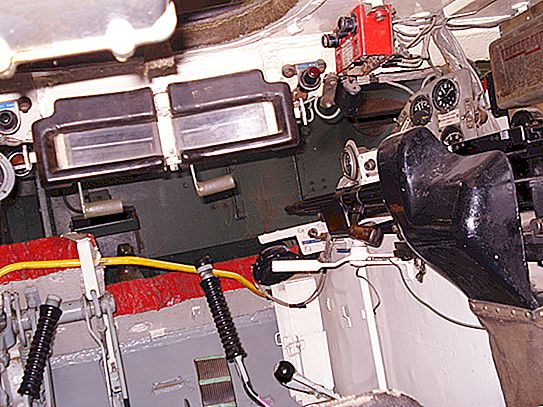
The tank is protected by differential anti-shell armor. For the manufacture of a rigid box-welded design of the armored hull, steel sheets from 1.6 to 10 cm thick were used. The frontal part was made by connecting two 10-cm armored plates. The top relative to the bottom is tilted 60 degrees. The lower one in a vertical plane was placed at an angle of 55 degrees. For the sides of the T-62 tank, solid vertical steel armored sheets with a thickness of 8 cm were used. The aft part consists of two sheets: the top 4.5 cm is vertical, and the lower one, which is 1.6 cm thick, is positioned at an angle of 70 degrees. The thickness of the tower roof is 3 cm, and the cover that covers the engine compartment is slightly thinner - 1.6 cm. In the manufacture of the bottom for the T-62, Soviet designers used four sheets that had been stamped. Their thickness is 2 cm. For the production of frontal and side sheets, 42 CM chromium-nickel-molybdenum steel was used, grade 49 C of the aft and roof, and 43 PSM for molybdenum bottom.
About crew protection
As a result of a nuclear explosion inside the tank creates excess pressure, the developers in order to protect the crew from radiation, developed a special anti-nuclear defense. It consisted in the fact that the hull and turret T-62 were made as airtight as possible. In addition, the combat vehicle is equipped with automatic lockable hatches, air intakes and shutters. Inside the cabin there is a special supercharger-separator, the purpose of which is to create increased pressure in the tank and filter the incoming air. Activation of anti-atomic protection is performed automatically after the RBZ-1M device has responded, responding to gamma radiation. In addition, the tank was equipped with a DP-ZB device, with the help of which ionizing radiation is also recorded.
About weapons
The designers equipped the tank with a 115-mm smoothbore semi-automatic gun U-5TS. The fastening of the gun is made using the casing. An ejector and a spring-type semi-automatic are provided for the gun. It is equipped with a horizontal wedge shutter and two triggers: an electric and a backup. As anti-recoil devices, a subbarrelled hydraulic recoil and a hydropneumatic reel are used. The maximum pressure generated in the barrel channel is 3730 kg / cm2. After each shot, the sleeve is automatically extracted through a special hatch in the tower.
About ammunition
For the gun, sub-caliber armor-piercing, cumulative and high-explosive fragmentation shells were developed. The ammunition for one combat unit provides for shells of 40 pieces. They are stacked in the engine and transmission compartment in special racks. The standard equipment of the tank is represented by 16 armor-piercing, 16th high-explosive fragmentation shells and 8 cumulative shells. However, according to experts, depending on which task the tank crew is assigned, the combat deployment can be changed.
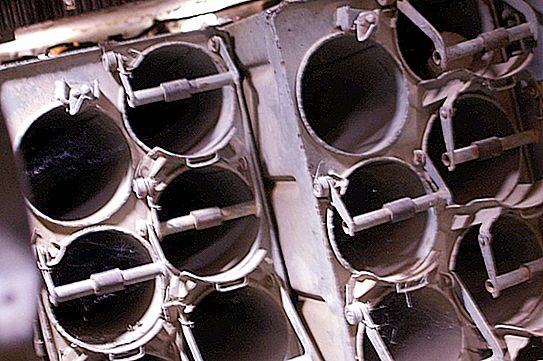
Initially feathered armor-piercing armor-piercing projectile was presented in two versions: 3BMZ and 3BM4 with the same weight and ballistic properties. The steel case contained armor-piercing and ballistic tips. In order to give the shell a rotational moment, it was equipped with a special six-stabilizer. As a result, the rotation of the projectile had a positive effect on flight speed. 3BM3 due to the presence of a tungsten carbide core had better armor penetration. Soon, Soviet gunsmiths created a new ammunition, which is listed as 3BM6. Unlike previous versions, the new ammunition is characterized by the presence of an all-steel case and an increased charge volume. Despite the fact that this ammunition has excellent ballistic qualities, they adopted 3BM21 containing a tungsten carbide core and a damper-localizer, and 3BM28, for the manufacture of a monoblock case which used depleted uranium.
About tank machine guns
In addition to the main gun, military equipment until 1964 was equipped with a 7.62-mm Soviet Goryunov machine gun. Later, the SGMT was replaced by a Kalashnikov machine gun, which has a similar caliber. Since both versions of the guns use the same ammunition and have similar ballistic properties, there was no need to change the sights. Nevertheless, according to experts, the new PCT is lighter and more compact. Unlike the Goryunov machine gun, the new model has an increased rate of fire. Within one minute, 800 shots can be fired, and not 600, as it was before. The machine gun ammunition is represented by 2500 rounds. They are contained in assembled form in ribbons of 250 pieces each. Ammunition equipped with steel cores, tracer and armor-piercing incendiary bullets. Using the latter option, it is possible to penetrate an armored plate 0.6 cm thick from a distance of 500 m. Nevertheless, the main purpose of the coaxial machine guns is to destroy enemy manpower and unarmored firearm.
About the powertrain
The tank is equipped with a V-shaped 12-cylinder four-stroke diesel engine with liquid cooling V-55V. The maximum power rating of the unit is 580 horsepower. According to the manufacturer, the warranty period for uninterrupted engine operation is at least 350 hours. Its location in the tank was the engine-transmission compartment. Cooling of the power unit is carried out by one tubular-belt radiator and a special fan. The engine air intake is cleaned with a VTI-4 two-stage air purifier.
About the fuel system
Military equipment is equipped with four internal fuel tanks, the total capacity of which is 675 liters. 280 l are poured into the tank located in the bow of the tank. The remaining containers are designed for 125, 145 and 127 liters. Additionally, the tank was equipped with three external fuel tanks of 95 liters. They are mounted on a special fenestrated shelf on the right side of the combat vehicle. In addition, the aft of the tank can be equipped with two fuel barrels of 200 liters.
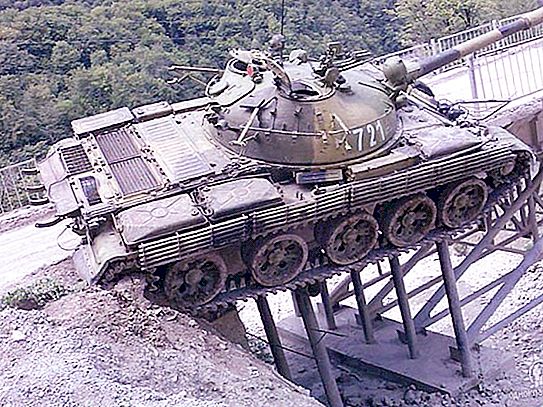
Their connection to the fuel system is not provided. Transfusion of their contents into the system is carried out in the parking lots by regular refueling means. According to experts, the presence of barrels of fuel does not affect the maneuverability of a combat vehicle at all.
About the performance characteristics
- T-62 belongs to the class of medium tanks.
- Military equipment was produced from 1961 to 1975. in Soviet Union. From 1980 to 1989 in the Democratic People's Republic of Korea.
- Dimensions T-62: 933.5 cm - the total length of the tank with the gun, 663 cm - the length of the hull. Height - 239.5 cm, and width - 330.
- The weight of the T-62 is 37 tons.
- The equipment is equipped with telescopic and periscopic electron-optical night sights.
- On a flat paved surface, the tank can move at a speed of 50 km / h. Cross country - 27 km / h.
- Aiming the gun and coaxial machine gun at the target is carried out using the telescopic articulated sight TSh2B-41.
About virtual military equipment
Judging by the numerous reviews, among gamers among a wide range of different games, Armored Warfare is very popular. Of all the available models of military equipment, it proved to be especially good in the Armata T-62 project.
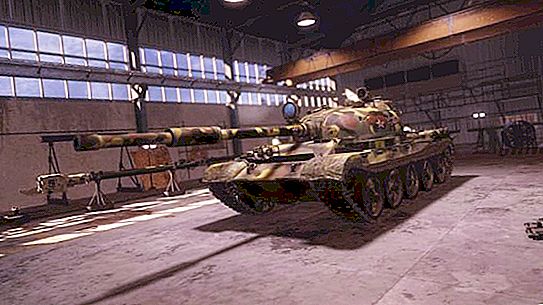
In the game, this model is listed as VTRN. According to experienced players, the T-62 Veteran tank is virtually no different from the pumped 62nd model. Since VTRN does not belong to the category of premium, then with this military equipment fans of tank simulators will have to rediscover.

